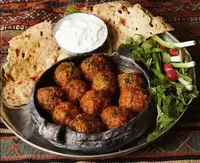The persian

The Fars region, which is located on the territory of the modern state of Iran in Southwest Asia, is often called Persia or the Persian state in historical literature.
The ancient Greeks called Fars Parsuan or Persis, so in Latin the name of these territories sounded like Persia.
However, the indigenous people of present-day Persia have always called their country nothing more than Iran, even in a historical context there is only the Iranian Empire. In ancient times, the Persian Empire reached the dawn of its influence and power.
The Persian kings conquered and subjugated territories from the Indus River to the lands of Egypt. The Persians defeated the warriors of all previous great empires. Babylon, Assyria, and Egypt bowed to Persia. Darius III, a descendant of the Persian king Darius the Great, became the last Persian to rule Persia.
After the equally great Alexander the Great conquered the Persian Empire, the culture and traditions of the Persian people mixed with the traditions of the Hellenes and Macedonians. And soon, as a result of the great migration of peoples to the territory of the Persian state, tribes came from the mountains of the Caspian Caucasus, which formed the first ancient Iranian settlements.
The new Iranian culture has adopted basic cultural traditions and even recipes for Persian cuisine. Currently, Iran is a controversial country that occupies a mixed position among all states in the region. As they say in political circles, "Iran is a hot topic. "
Recipes for Persian cuisine can be roughly divided into two categories. The first category will include ancient Persian cuisine, which is still prepared by the inhabitants of Iran. So-called ancient court recipes for Persian cuisine. In ancient times, Persians made various meat dishes with all kinds of sauces.
Until now, the recipe for fragrant Persian gulash is known. In Persian goulash, cinnamon, mint and pomegranate fruit flesh were necessarily added. Persians often ate vegetables and fruits. In ancient times, there were real legends about Persian gardens.
Therefore, among the recipes of Persian cuisine, you can find dishes consisting of stuffed fruit or vegetables. Persians have used cinnamon and cardamom in their culinary tradition for centuries. The main spice of ancient Persian cuisine is considered saffron.
And the main side dish for the Persians has always remained fig. Moreover, rice was prepared in a special way. They cooked it not in water, but in melted milk to get an excellent and tasty golden crust. In addition to milk, saffron was always added to rice, and the result was the famous Persian rice. And nowadays you can taste Persian rice in modern Iranian restaurants.
You can also try delicate desserts made based on rose water. Usually nuts, usually pistachios and fruits, were added to Persian desserts. Pink water was often mixed with fruit juices and sherbet, a Persian ice cream, was made from this mixture.
Persian cuisine originated as long ago as Persia itself, so it is often respectfully called Mother Kitchen. The traditions of Persian cuisine are believed to have had a huge impact on the national cuisines of states such as Morocco, India and of course Iran.
Recipes of ancient Persian cuisine do not enjoy such great popularity among modern residents of Iran. This is also connected with other cultural and historical traditions and with the development of the second direction of Persian cuisine. Iranian cuisine separated from ancient Persian cuisine as early as the 4th century BC. The traditions of Iranian cooking had enough time to absorb the experience of the Persians and on this basis create their own distinctive cuisine.
 Español
Español Français
Français Português
Português Русский
Русский 简体中文
简体中文 繁體中文
繁體中文 日本語
日本語 한국어
한국어 العربية
العربية Türkçe
Türkçe Қазақ
Қазақ Deutsch
Deutsch Italiano
Italiano Українська
Українська
